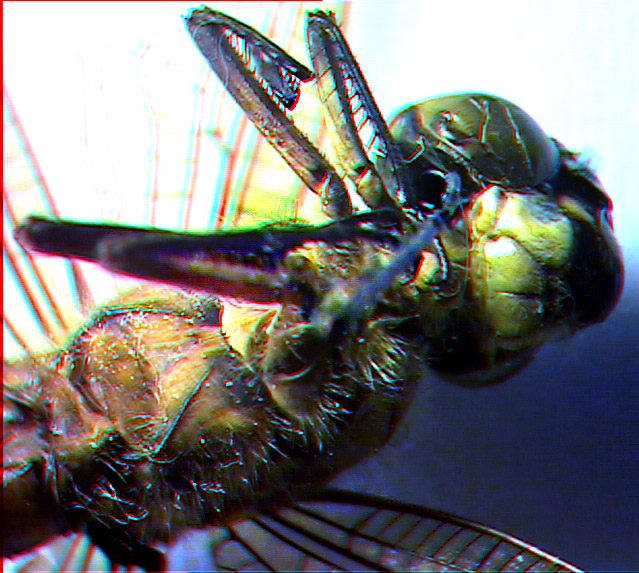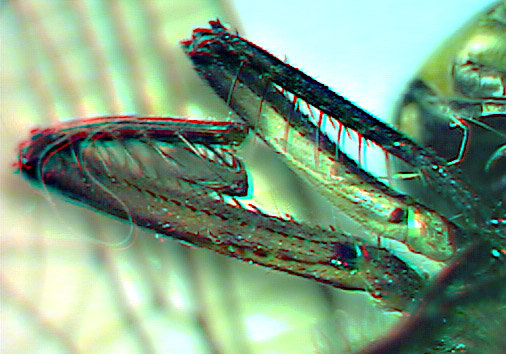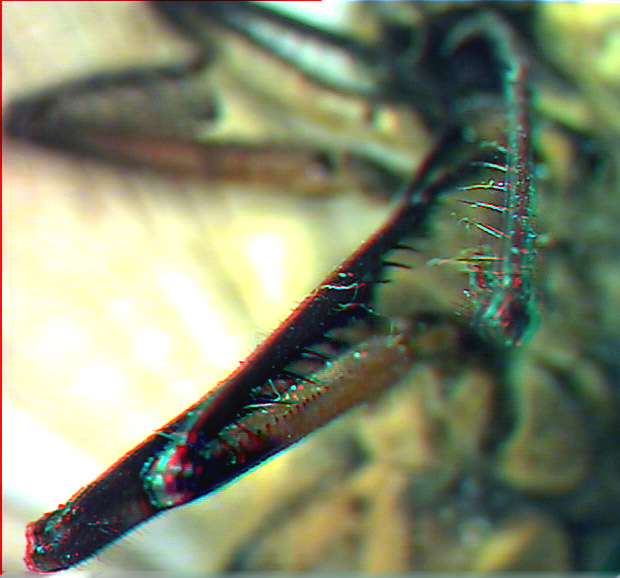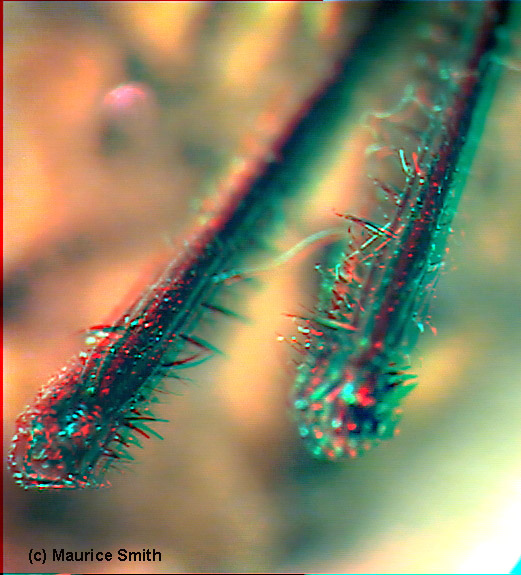When Dragons fall from the sky |
|||||
A 3D article by Maurice
Smith - March 2000
|
|||||
Dragonflies are opportunist feeders, preying on whatever they can find. They may often congregate in large numbers where food suddenly becomes abundant, for example - when ants swarm - and are able to catch their prey easily in flight. Their forwardly-directed front legs are populated with sideways-facing bristles comprising a very effective insect trap. Prey may be consumed during flight or after settling. Dragonflies will often discard the wings of larger insects and consume the remaining parts. |
|||||
|
|||||
|
|||||
"A fallen Dragon! Legs." |
|||||
Dragonflies may use learning and memory to improve their hunting skills. Learning is recognized as an important aspect in the study of insects yet little is understood about this in relation to dragonflies. It has been noted that dragonflies favoring a specific type of prey may become progressively more effective in locating and catching it - suggesting they may well exhibit learning processes similar to bees. Dragonflies are normally divided into being 'territorial' or non-territorial - with the former competing against other males for domination and the holding of a specific area. This trait is part of the process for finding and copulating with females. Male dragonflies do not seem to physically 'fight' : dominance is normally determined by superior flying skills and size. |
|||||
|
|||||
"A fallen Dragon! Legs! Close-up." |
|||||
Dragonflies are good predators, but they are also vulnerable themselves to predation from a variety of airborne and terrestrial forms. Frogs are quite adept at seizing low-flying individuals, with the females particularly at risk when egg-laying from whirligig beetles and water skaters. When ovipositing females enter water, they are vulnerable to submerged attacks by water boatmen and water scorpions which can grasp their abdomens and secure their attack. Raft spiders can sprint at high speed across pond water and seize the smaller damselflies! |
|||||
|
|||||
A 3D easy-read article by Maurice Smith |



